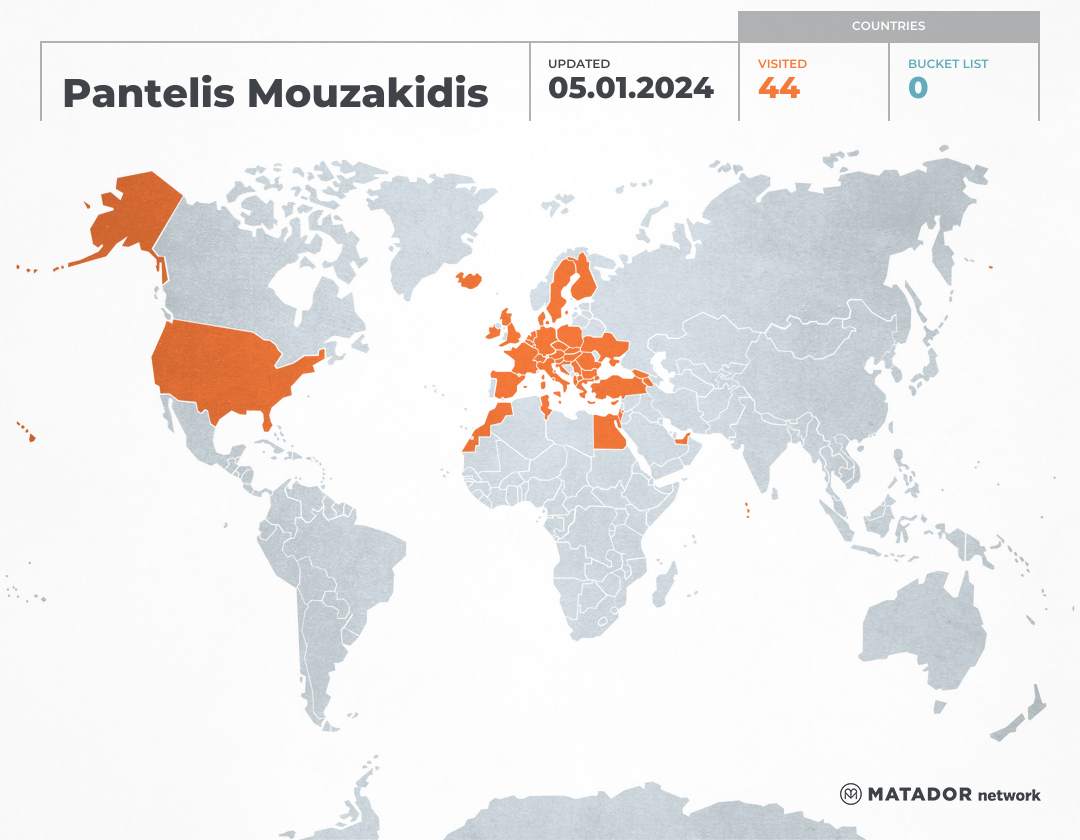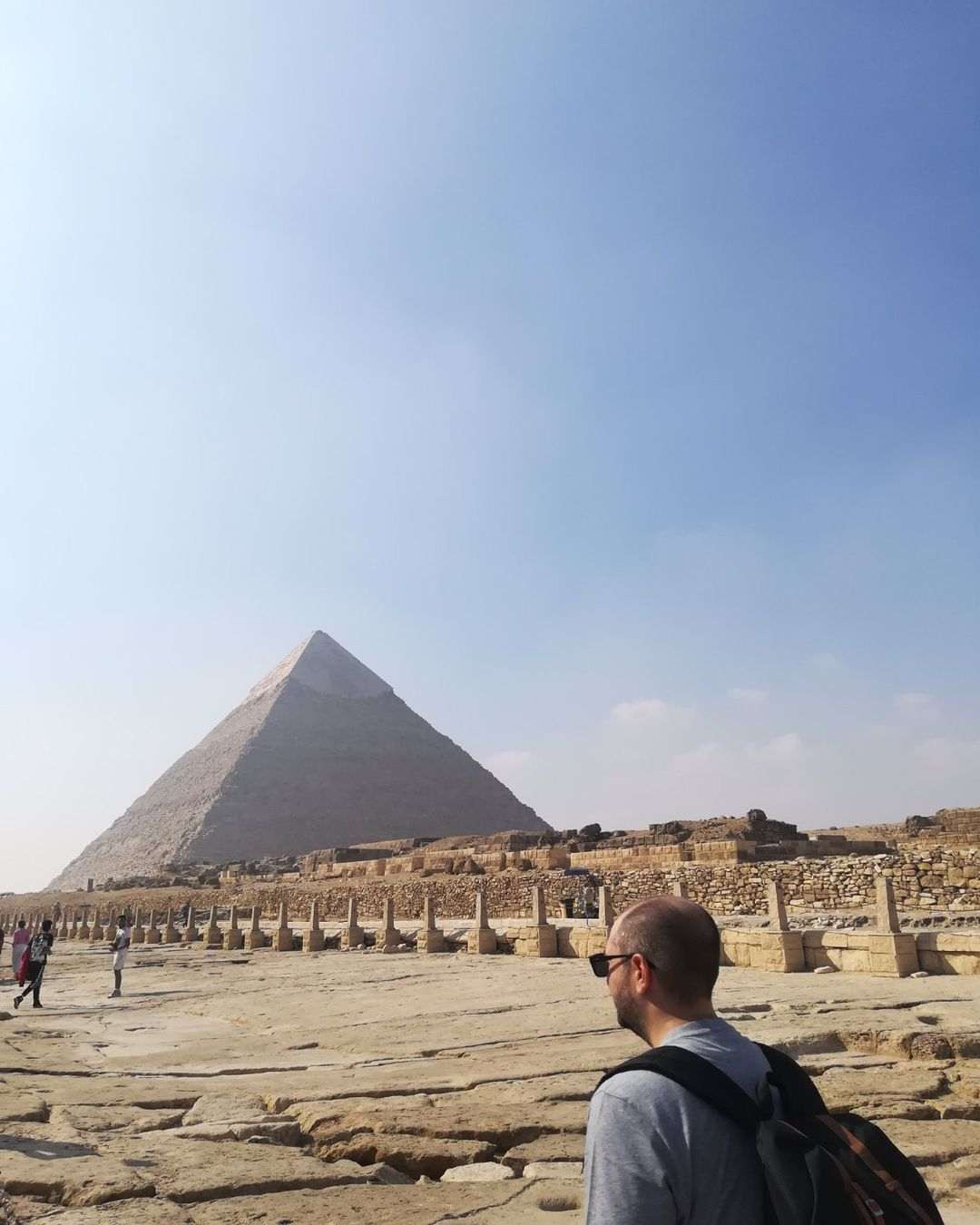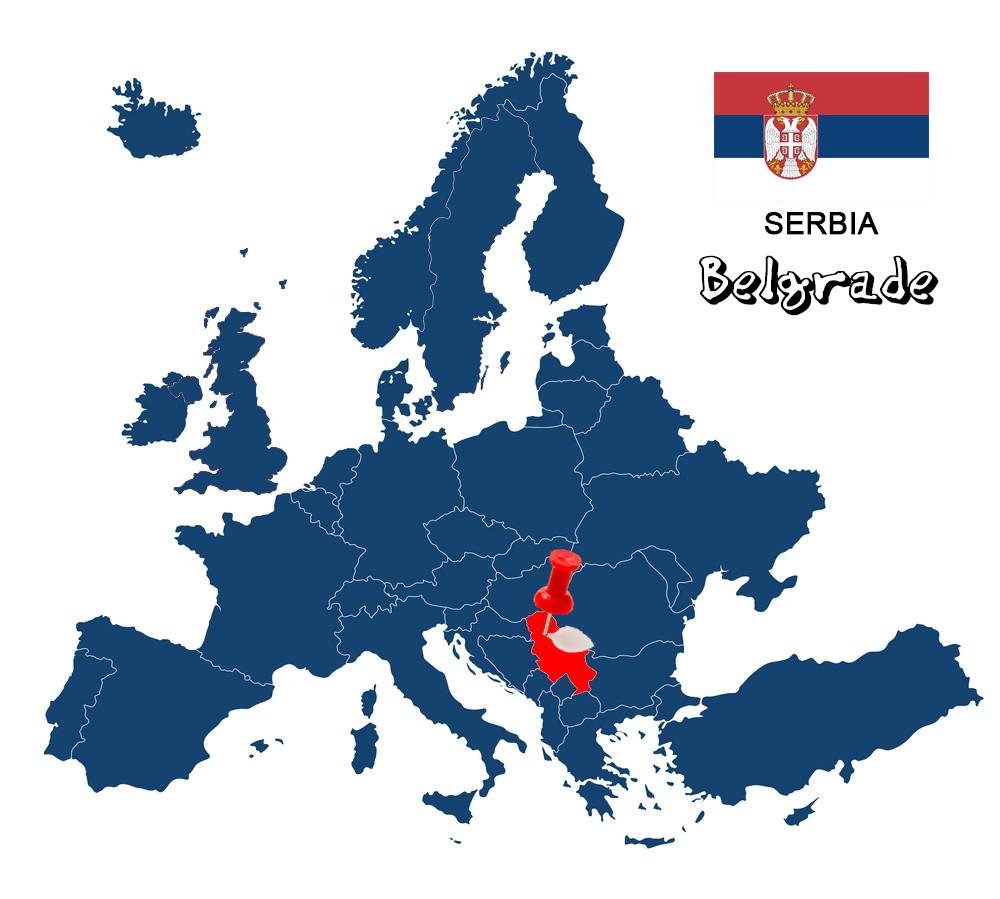
Belgrade is famous for its uniqueness. It is certainly not one of the most developed cities in Europe, as it is now slowly growing, nor is it at the top of your travel lists, but it is an "invincible" city, which always finds a way to revive and stand upright through every war and every bombing. It exudes the simplicity and the glamor of the old, atmospheric Europe, which I personally have not encountered anywhere else.
A few words about the city
Belgrade is the capital of Serbia and one of the oldest cities in Europe, having witnessed life forms in the region since the 6th millennium B.C.! Of course, it is the largest city in the country, with a population of 1.23 million inhabitants, while over 1,750,000 people live within its administrative boundaries, making Belgrade the fourth most populous city in the Balkans after Istanbul, Athens and Bucharest. It is located at the confluence of the Savva and Danube rivers, where the plain of Pannonia meets the Balkans. Despite its turbulent past, it is filled with charming buildings, cosmopolitan alleys and beautiful squares with history deeply etched in them. All this combined with the intense but at the same time economical nightlife; make the city one of the most popular destinations in the Balkans. So I will try to introduce you to the "White City" or the "Berlin of the Balkans" through my own eyes and share with you what I think should be seen by someone who visits it for the first time.
Kalemegdan
Without any doubt the old fortress of Belgrade (Kalemegdan) is the most beautiful and interesting attraction of the city. It is a fortress standing on the top of Sumadija Hill, at a height of 125.5 meters, at the confluence of the Danube and Savva rivers. The fortress is the heart and the oldest spot of Belgrade and for centuries, the population of the city lived within the walls of the fortress, which makes it perfectly intertwined with its history.
It is divided into four sectors, first is the "low Town" (Donji Grad), in which is the tower of Daredevil (Kula Nebojsa), which became a museum of an emblematic person of the Greek Revolution, Rigas Feraios. The second zone is the "upper city" (Gornji Grad), turned into a park with beautiful walks and facilities for sports activities, and there you will find the monument of Victor, built to celebrate the victory of the allies in the First World War. The area "small Kalemegdan" (Mali Kalemegdan) includes the eastern area and there is the city Zoo and the Art Pavilion Cvijeta Zuzoric, while finally in the southern area stretches the "great Kalemegdan" (Veliki Kalemegdan), with geometric walks, the Museum of Forestry and hunting, the monument of gratitude in France, in honor of the French who helped the Serbs in the First World War and The War Museum (Vojni muzej). The exhibits of the Museum want to remind the visitor that it is not many years since shells and tanks were not just exhibits. The entrance costs only 200 dinars, which is about 2e! Throughout the day the castle is full of tourists and locals who enjoy the shade and the view, while in the evening many young people gather in groups and spend the night there with music.
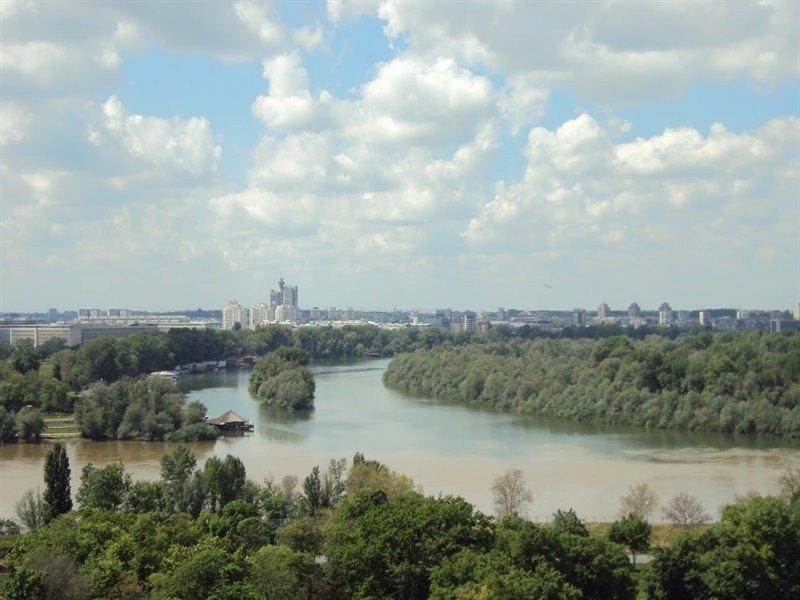
Knez Michailova
If Kalemegdan is the heart of the city, then the street of Prince Michael (Knez Michailova) is its main “artery”. It is the largest and most famous pedestrian street in the country and admittedly one of the most beautiful in Europe. There were many impressive buildings and mansions in the past, but they were "sacrificed" on the altar of Emilijan Josimovic's idea of modern Belgrade. Of course, there are some left, which date back to the end of 1870 and give a nostalgic note to the city.
One of the most important is the hotel Srpska Kruna, built in 1869 and was of course the most modern hotel of the time, and today it is used as a library. Other important buildings are the House of lawyer Marko Stojanovic's, which today houses the gallery of the Academy of Fine Arts, the building of the Serbian Academy of Sciences, built in 1923-1924, as well as various urban houses with traditional Balkan architecture features. Finally, there is also the drinking water fountain (Terazijska cesma), a gift to passers-by on hot summer days.
Of course the most European avenue of Belgrade today is famous mainly for the hundreds of shops, markets with local delicacies and street artists, which make you follow the crowd carefree, to the end of the route.
Trg Republike
The meeting place of the locals is "the horse" and when they say horse they mean the statue of Mihailo Obrenovic, which dominates on horseback in the Republic Square (Trg Republike). This Central Square is the perfect spot to start your city tours, from Knez Michailova to Kalemegdan. The Republic Square was formed after the destruction of Stambol gate in 1886, so named because of the road that crossed it and led to Istanbul. As for the bronze statue of Prince Michael on the horse, it was created by the Italian sculptor Enrico Pazzi in 1882. The statue reminds the audience of the Prince's greatest achievement, his victory over the Turks and the liberation of the last 7 cities in 1867. The names of the cities are engraved on plaques on the monument, and Michael's hand Points towards Istanbul, calling on the Turks to leave the country.
During World War II most of the buildings on the Square were destroyed by bombing and after the end of the war the tram lines were removed. Today, however, some of the most famous buildings and attractions of the city are on it, including the National Museum (Narodni Muzej) and the National Theatre (Narodno Pozoriste). The National Museum is the largest and oldest museum in the country, which was founded on May 10, 1844. It moved into the current building in 1950 and opened its gates to the public on May 23, 1952. It includes 34 collections with over 400,000 archaeological, monetary and historical finds, while since its establishment, the museum's collection has increased significantly with a wealth of foreign masterpieces. The entrance costs 300 dinars, that is, about 2.5e.
On the other hand, the National Theatre was founded in the second half of the 19th century and was the main pillar of the design of the Square, as we see it today. Built back in 1868, the National Theater following the fate of its own people and country, passed through different phases of architectural and artistic development, surviving as a symbol of Serbian culture, tradition and spirituality. Today, under its roof, there are three artistic ensembles - opera, drama and Ballet. Both buildings were declared monuments of culture of great importance and are protected by the Republic of Serbia.
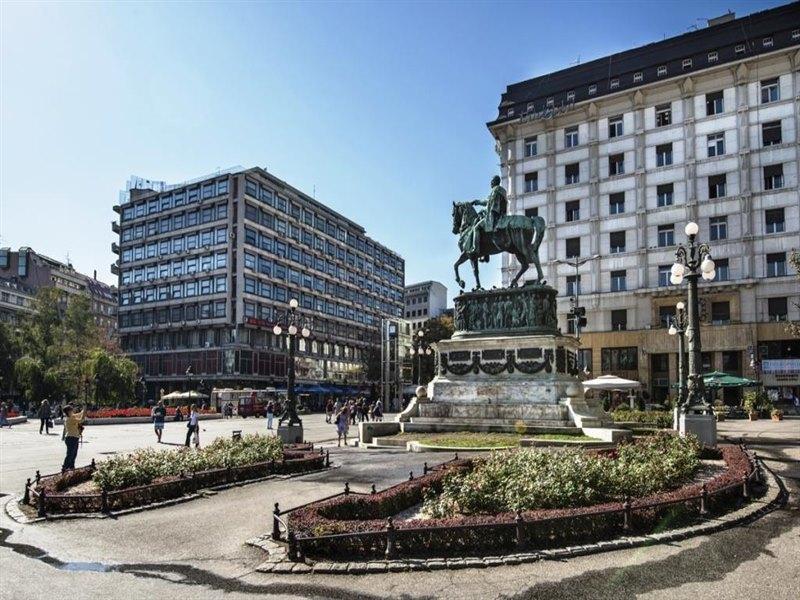
Skadarlija
In the so-called "Montmartre of Belgrade” we find the most traditional side of the city, Skadarlija. It is a beautiful stone pedestrian street, about 400 meters away, which gives Belgrade the scent of Parisian nostalgia, but retains its own unique physiognomy. It was the place frequented by famous writers and intellectuals of the last century, while today it is full of cafes and restaurants, serving traditional and of course, delicious food! There are also many hotels, art galleries and antique-souvenir shops in the area, while music groups play local Balkan music and artists dressed in traditional costumes perform on the street. Finally, for Greeks people Skadarlija may seem familiar, since strongly resembles "Ladadika" in Thessaloniki and "Plaka" in Athens.
Hram Svetog Save
The Holy Church of St. Savvas (Hram Svetog Save) is very interesting to Greeks, as it is the largest Orthodox Church in the world! It is dedicated to Saint Savva, the founder of the Serbian Orthodox Church and an important figure of the country during the medieval era. The construction of the church was made exclusively with offerings, while it is believed that it was built at the place where Saint Savvas was buried. The first designs were created in 1905, but were rejected, and then the Balkan wars and the First World War froze construction. Finally in 1926, the design of architect Aleksandar Deroko was chosen among 22 nominations and 340 years after the burning of the corpse of Saint Savvas, in 1935, the construction of the huge temple began, to stop again during World War II. After several years and only in 1985 work continued with greater achievement the installation of the dome, weighing 4,000 tons in 1989. Today the church is ready externally, but unfortunately there is still much to be done inside. The purpose is to fill the interior with mosaics, samples of which you can see at the entrance to the temple. Admission is free.
Rusevine bombardovanja
This particular part of the city remained reminiscent of the not-so-distant past. An entire building block, the one that received the NATO bombardment about a decade ago, remains half destroyed, with the ruins, the missing floors, the shattered facades and the traces of the shrapnel to testify and remind the brutality of the war, both locals and tourists. NATO's bombing of the city in 1999 lasted 78 days and although Belgrade did not suffer as much as other Serbian cities, it still has the most ruins from the war. The most famous are the building of the Ministry of Internal Affairs and the Ministry of Defense on Kneza Milosa Avenue. It is the recent history written in the Balkans that has changed the attitude of the inhabitants of Belgrade towards life. The one who wants it to continue normally and next to the ruins to walk smiling people, people who after the "sufferings" decided to enjoy their daily life to the fullest.
Ada Ciganlija
You probably don't know that Belgrade has a beach, but it also has one of the largest urban beaches in Europe, with more than 7 km of coastline! This is the artificial beach of Ada Ciganlija island, created on the banks of the Savva River and in summer attracts over 100,000 people per day, which can reach 300,000 on weekends! Locals call it the" Belgrade Sea" or "Belgrade Hawaii". The beach on the green islet is very organized with sunbeds on the artificial sand, lifeguards, cafes and canteens with fast food. But Ada island is not only a beach, since there you can find paintball courts, bungee jumping or rafting facilities, canoes, bicycles, rollers, and there are also walking marches. For those who are not a fan of exercise, a small roller coaster that makes the round of the artificial island is also offered.
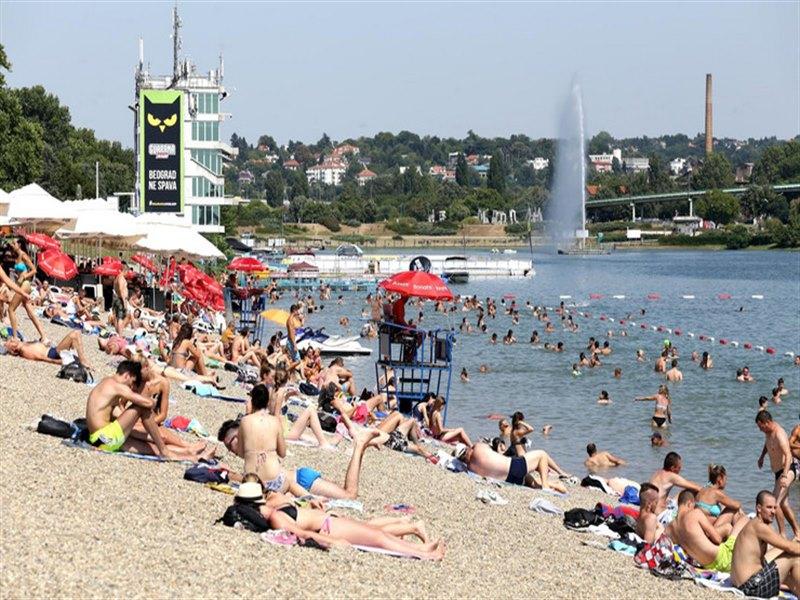
Stari Dvor-Novi Dvor
The Old Palace (Stari Dvor) was the Royal Palace of the Obrenovic dynasty of Serbia, and today houses the Town Hall. It was built between 1882 and 1884, according to the plans of Aleksandar Bugarski with academic architecture of the 19th century. The interior of the palace was extremely impressive for the time, but it suffered significant damage during the two World Wars. After the first damage of World War I, the palace was completely reconstructed, while the second reconstruction followed World War II in 1947. During the reconstruction the architecture of the building changed drastically, but it did not take away any beauty. Certainly a visit to the Old Palace and a walk inside it is a very pleasant option when visiting the city.
Directly opposite you will find the new palace (Novi Dvor), which was the royal residence of the Karadordevic dynasty of Serbia and later of the Kingdom of Yugoslavia. Today it is the seat of the president of Serbia. The construction of the new royal palace for Prince Alexander began in 1911 and was completed in 1914, on the eve of the Great War. And this building was affected by the wars, but it was also reconstructed, even using pieces from the Old Palace.
The museums
Apart from the National and the War Museum to which I referred above, Belgrade has several other very interesting museums.
The Museum of Yugoslav history (Muzej Jugoslavije) is one of the most important in the Serbian capital and is essentially three museums in one. This museum includes the "May 25 Museum", "House of flowers" and "Old Museum", with over 200,000 exhibits on ethnic minorities, the Yugoslav revolution and the misty history of the region. The entrance costs 400 dinars, that is, about 3.5e.
Another very interesting museum is the one dedicated to the famous Serbian-American inventor, Nikola Tesla (Muzej Nikole Tesle). It is housed in a 1929 villa designed by the well-known Serbian architect Dragisa Brasovan and hosts various exhibits with what the great scientist and inventor bequeathed to humanity. The entrance costs 500 dinars, that is, about 4.5e.
Finally, if you want to get initiated into Serbian culture and get to know the country's culture better, you should make a stop at the Ethnographic Museum (Etnografski muzej). Through various exhibits, the daily life, the folklore element and the traditional objects of this side of the Balkans are presented in one of the most central squares of Belgrade. The entrance costs 200 dinars, that is, about 2e.
How to go
Thessaloniki is connected by air with Belgrade and Nikola Tesla Airport via AirSerbia. With proper planning one can find tickets starting from 111€ round trip. Also you can reach the city very easily by train, since there is a daily route of Trainose (Thessaloniki-Sofia-Belgrade) with tickets ranging from 30 to 50 € round trip, depending on the period you choose.
Where to stay
The city is relatively small, however it has several accommodation offered at bargain prices! Surely the center or as the locals call it “Down town”, is a sure solution for those who do not want to get involved with public transport and wish to be close to all the sights. Of course, I would suggest some hotels or hostels just outside the centre, which offer the same amenities and facilities at cheaper prices and are easily accessible by both trams and buses as well as taxis that charge very little money. So my proposal is the Radisson Collection Hotel, Old Mill Belgrade, a luxury four-star hotel, which although a little more expensive than the average, moves to reasonable levels.
How to move
The city center is relatively small and you will walk it mainly on foot. However, Belgrade has a good system of transportation with trolleys, trams and buses, in case you need to go a little outside (one of them will definitely be for the Church of St. Savva). I would suggest that you buy your tickets from the kiosks that are everywhere, as from the driver they are more expensive. Finally taxis are particularly economical and necessary when public transport is full of people or in the evening. But beware of scammers since there are many companies and different colors in taxis.
What to eat
Serbian cuisine is very tasty and very similar to Greek. It is influenced, due to the country's position on the map, by both Mediterranean and Northern European cuisine. Its main elements are meats and strong herbs, while soups have their place of honor. A good choice to taste traditional flavors is the beautiful Sesir moj in Skadarlija, which is decorated entirely with flowers and you will enjoy your food to the sounds of live Serbian music. If you are not into experiments and want to make sure choices, Belgrade will not leave you fasting. For unique burgers visit the Burger House in Knez Michailova, for Mexican cuisine the Burrito Madre, while if you are looking for pizza you will find it everywhere as there are plenty shops all over the city. As for your entertainment, I recommend Kasina by Community, which in the morning operates as a cafe-restaurant (especially good) and in the evening turns into a place for frantic clubbing. Finally, if you are a fan of cocktails, do not miss the Bar Central, where the staff will help you choose the drink that suits you.
Useful information

In Belgrade we travel with a passport or a new type of Police ID, where the details are indicated in Latin characters.
In Belgrade the language used is, of course, Serbian. But most, if not all, speak English, so ask for clarification in English.
The currency of the country is the dinar (Dinar), and its exchange rate at the moment is 1€ = 117.42 dinars.
Convert your money either to the dozens of Greek banks that exist in the city, or to the exchanges markets, which indicate the exchange rates, since they take very little Commission.
Getting to and from the airport is simple, since there are continuous bus services (Mini Bus A1 & PTC Belgrade 72), while taxis are an appropriate solution.
The Greek Embassy in Belgrade is located at 33 Francuska Street and its phone is + 381 11 3226523.
The climate of Serbia is Continental which means quite cold winters (usually with snowy) and warm though humid summers. So the ideal visiting period is spring or summer.
Recommended excursions → Novi Sad, Golubac, Viminacium

If this article seemed interesting or contributed to your quality information, then you can like my facebook page: o_thessalonikios or follow me on instagram!
Mouzakidis Pantelis





